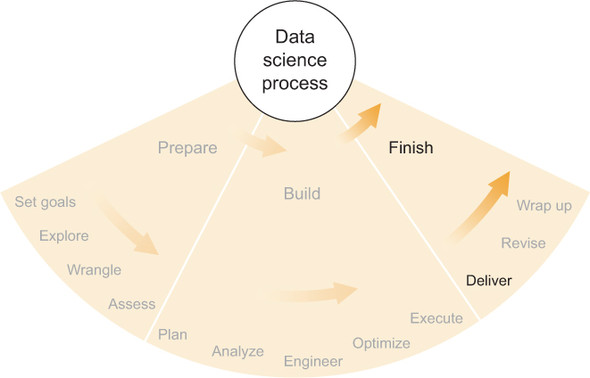This chapter covers
- Understanding what the customer wants to see in results
- Various forms that results can take, from a simple report to an analytical application
- Why some content should or should not be included in the results product
Figure 11.1 shows where we are in the data science process: product delivery. Previous chapters of this book discuss setting project goals, asking good questions, and answering those questions through rigorous analysis of data. After all this is done, if you’re the lead data scientist you probably know more about every aspect of the project than anyone else, and you’re in a position to answer all sorts of questions about the project, ranging from the methods and tools used to the significance and impact of the results. But it’s not usually a good idea to stay in this position in perpetuity, making yourself the only possible source of information about the project and its results. Not only would you become the single point of failure (if you’re not available for some reason, what happens?), but you also would have created perpetual work for yourself, whenever questions come up. Because of these possibilities, it’s usually good to create something that summarizes or catalogs your results so that customers and other people can have their questions—at least the most common ones—answered without involving you.
